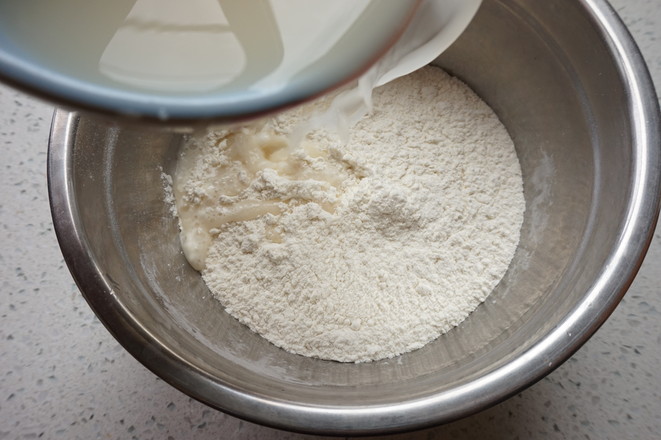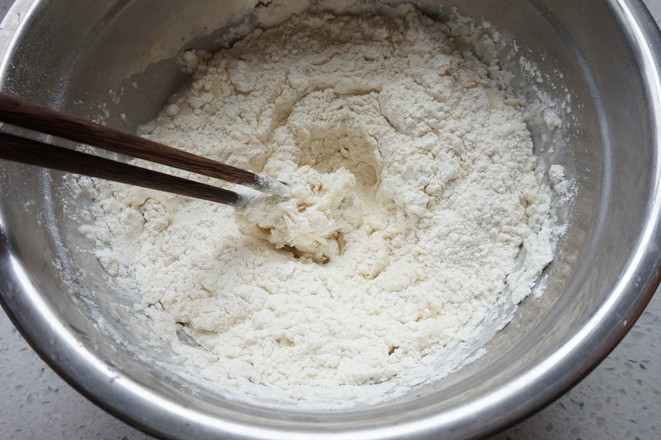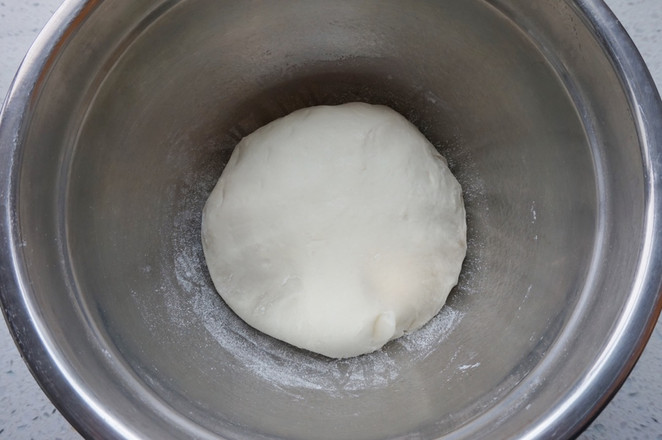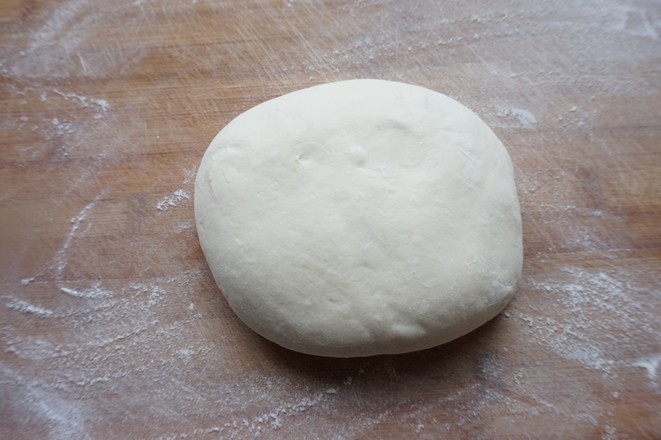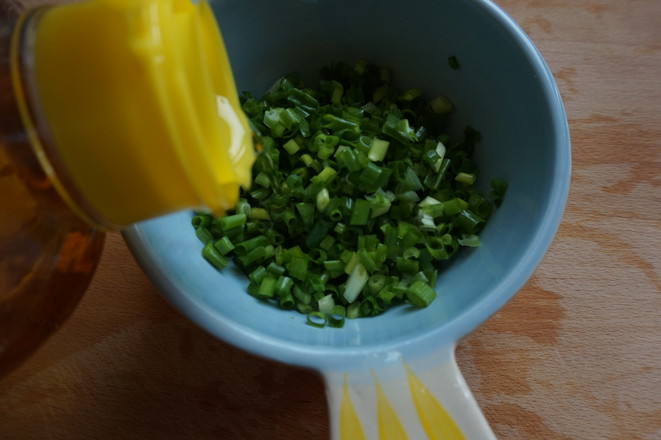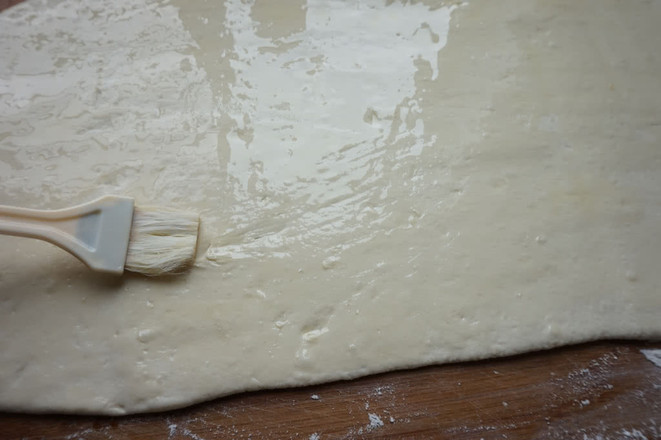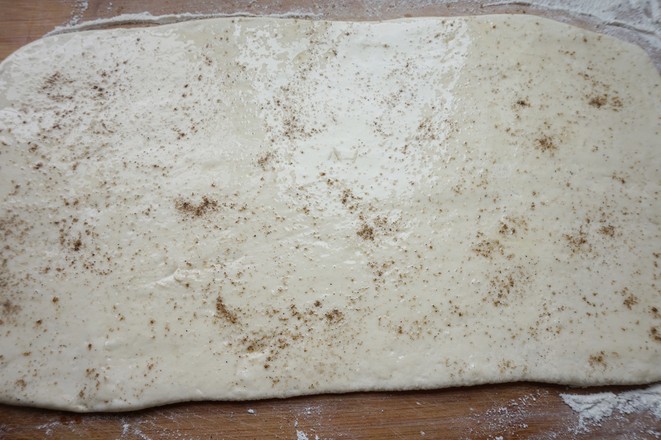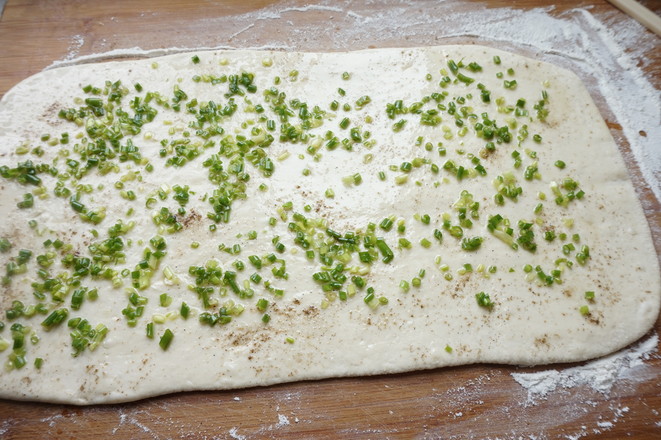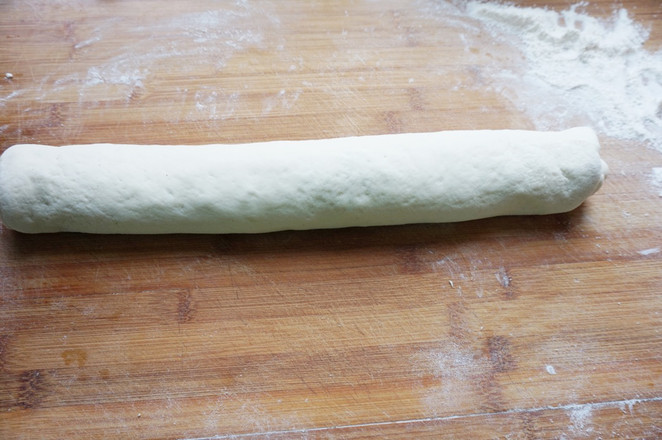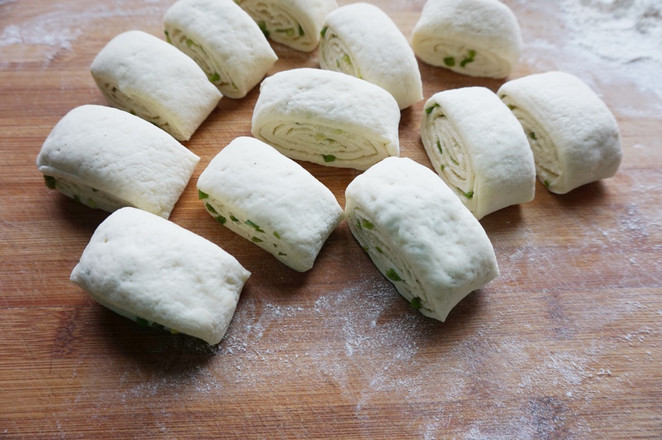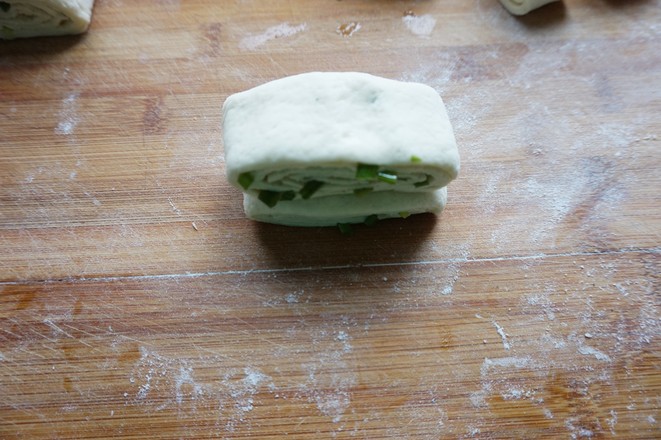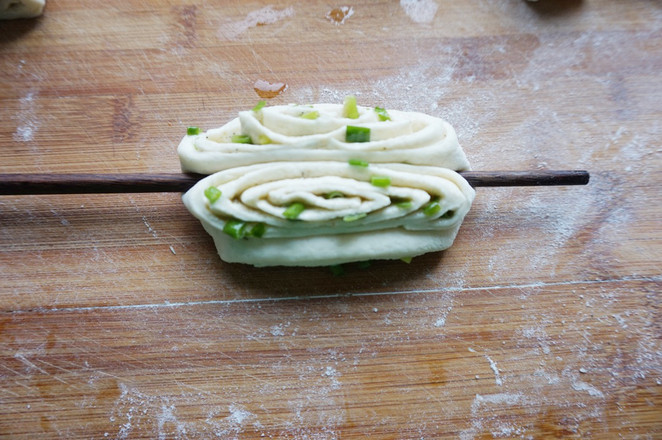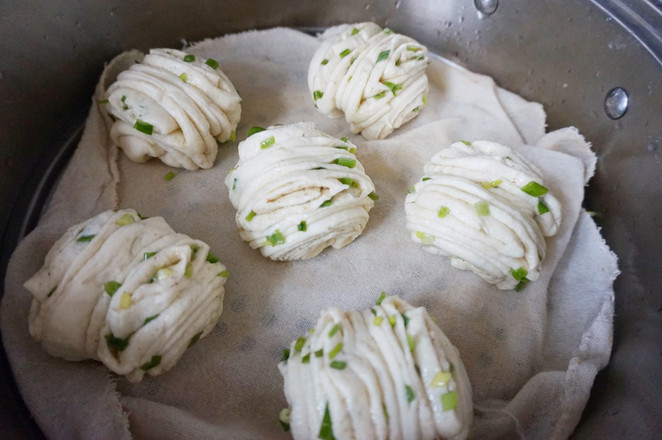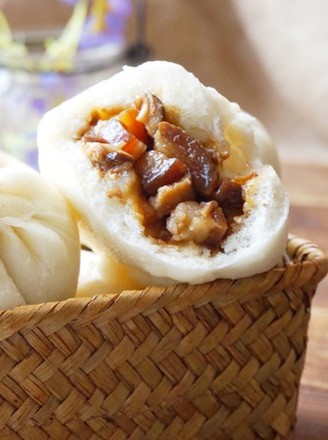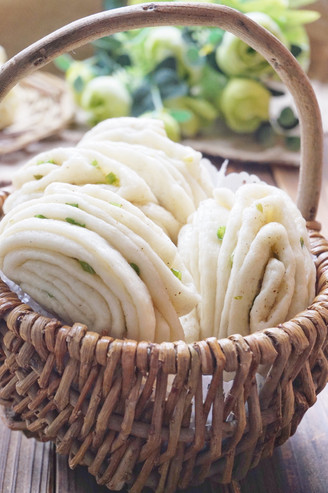Scallion and Pepper Salt Roll
1.
First use water at about 40 degrees to dissolve the yeast.
2.
Pour the flour into the basin and add the yeast water.
3.
Stir with chopsticks first.
4.
Then synthesize a smooth dough by hand. Cover with a damp cloth to ferment.
5.
The dough is more than twice as large, and the honeycomb holes are opened, and the dough is ready. The noodles must be posted before proceeding to the next step.
6.
The spread dough is moved to the chopping board and knead and vented and then awake for 5-10 minutes.
7.
Chopped shallots, mix well with appropriate amount of cooking oil, and mix with oil to keep the green onions.
8.
Roll out the awake noodles into a rectangular noodle with a thickness of about 3 mm.
9.
Apply a layer of cooking oil.
10.
Sprinkle an appropriate amount of salt and pepper powder. If you don't like the taste of salt and pepper, you can just add salt.
11.
Spread the chopped chives evenly.
12.
Roll up from the short side.
13.
Cut into sections and cut in even numbers, about three centimeters in width.
14.
Take two pieces and stack them up.
15.
Press down from the middle with chopsticks.
16.
The ends are rounded towards the middle.
17.
Put it in a steamer with cold water, don't turn on the fire, cover and let it stand for ten minutes, if it is winter, it will take longer. Turn on the fire after ten minutes, and steam for 10 minutes from the time the water is boiled. This time also depends on the size of the Hanamaki. Turn off the heat and simmer for 3 minutes before removing the lid.
18.
The fragrant Hanamaki is ready to eat.
Tips:
1. Flour is the all-purpose flour for steaming buns and buns. It is best to choose Zhongyu original wheat flour without adding any additives, and it is fully automatic production; it is processed by Buhler wheat flour milling technology, scientifically blended with wheat, and reasonably blended; the wheat has a strong aroma.
2. Because the water absorption of flour will be different, adjust the softness and hardness of the noodles when you make the noodles. The noodles used to make this Hanamaki should be moderately soft and hard. If the noodles are too hard, the taste will not be so soft. If the noodles are too soft, it will affect Shape and layering.



